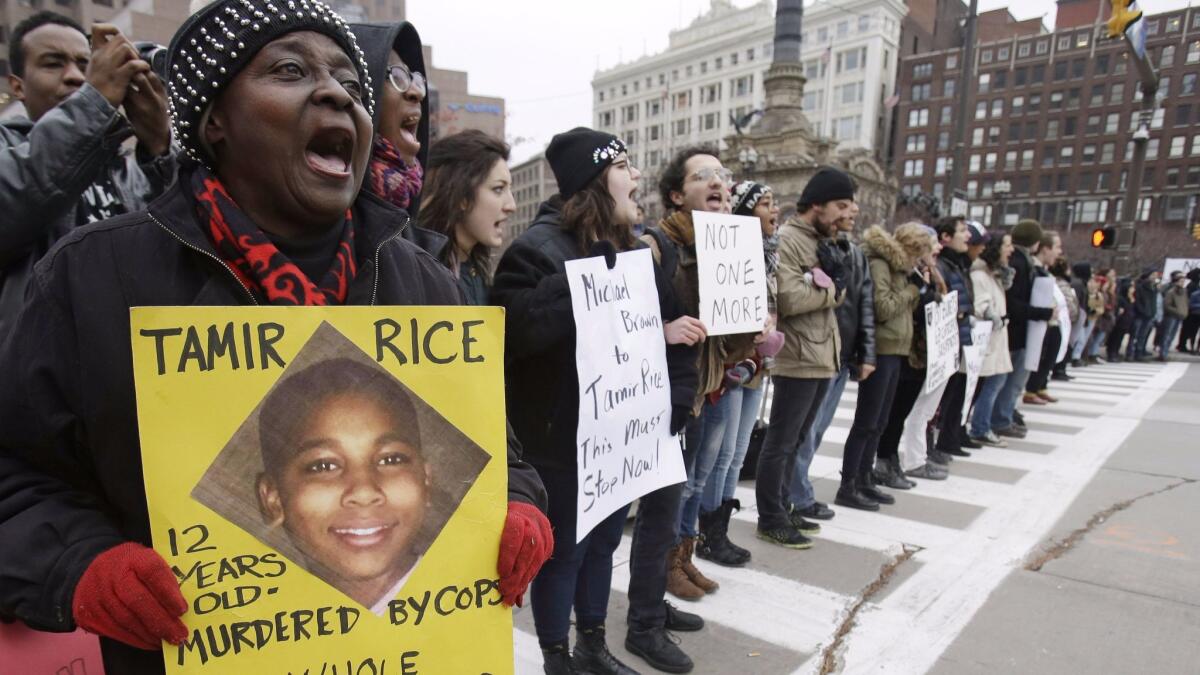Adriana E. Ramirez on why readers love ‘The Hate U Give’
One of the biggest young adult novels in the country — having sold more than 63,000 copies since its debut in February — deals with a young girl facing off against an institutional conspiracy to oppress her people. The teenage heroine gets dragged into a cultural rebellion and does her best to find her voice and her place within this rebellion to save and protect her family and community — all while negotiating the typical dramas of high school (boyfriends, friends, dances and varsity sports).
But “The Hate U Give” by Angie Thomas isn’t set in a dystopian future, parallel universe, sci-fi realm or fantasy world. “The Hate U Give” takes place in the contemporary inner cities and “urban war zones” of our own country. Although, to be fair, given the stratification of our cities, for some out in the suburbs, the urban centers may as well be Mars.
Starr Carter navigates both the suburbs and her neighborhood well, code-switching her language and demeanor to fit in where necessary, learning “to speak with two different voices.” She’s 16, on the basketball team and attending a private high school that requires a commute away from her neighborhood and childhood friends. Starr has a lot on her plate: a growing chasm with a best friend, a white boyfriend to hide from her father, all while balancing school with her job at her father’s store.
When she runs into an old friend, Khalil, Starr regrets the way her new school takes her away from the neighborhood. But the neighborhood isn’t safe, and it’s not just the gangs, crime and poverty. A night of talking nostalgia with a childhood buddy quickly turns into tragedy, after a traffic stop results in police shooting an unarmed Khalil, with Starr as the only witness. “The Hate U Give” follows Starr as she wakes up to the realities of race, privilege and fear.
Starr Carter’s story matters to our world. Starr’s frustrations and fears echo those of my students, friends and colleagues across races.
Critics are calling “The Hate U Give” a “Black Lives Matter novel,” since the system that the young and plucky Starr seeks to dismantle is the institutional oppression of black people. “The Hate U Give” is, yes, a novel about race — but it is also a dystopian young adult novel that happens to be set in reality.
I once taught a class in which my students discussed dystopian young adult fiction. Over the course of a semester, a theme emerged: a teenager trying to understand the limits of adult authority, transitioning into maturity, and trying to negotiate the violence of imposed social order. We talked “Harry Potter,” “The Hunger Games” and “Divergent.”
Nick Smart, an English professor at the College of New Rochelle in New York, explained the common themes to me. “YA has been dominated by dystopias in which there have been heroines attempting the overthrow of seemingly undefeatable obstacles. Katniss, Tris from ‘Divergent’ or even Hazel in ‘The Fault in Our Stars.’” In Hazel’s case, the obstacle was a very real cancer, yet “the comparison can be made between these characters — young girls out against the world in various ways,” Smart added. “In ‘The Hate U Give,’ there’s also a girl — who happens to be a black girl — being sent out against the system, against the world, against an entrenched opposition.”

That’s a matter of perspective; for some, that Starr “happens to be a black girl” is everything.
A student in my class, Nicole, stood up one day and asked why Katniss was white. She made the point that right now, the people she knows most like Katniss are the black girls in her neighborhood. “Where I grew up, it’s always ‘The Hunger Games.’ ”
“The Hate U Give” is a novel for Nicole. But in touching on the traditional tropes of dystopian young adult fiction, Thomas’ novel uses a familiar structure to prepare all readers for the nightmare Starr lives through. Which is to say: Starr’s story is familiar to us all. The politics of Black Lives Matter inform the story but do not define it; what defines the story is Starr Carter, a teenage girl fighting the system.
On the cover of “The Hate U Give,” a black girl (presumably Starr) holds a placard bearing the title. I think about Nicole — how many books have been written with her in mind? With a face like hers on the cover? I think about the small miracle that placed Starr’s voice which like Nicole’s, rarely gets to be front and center in bestseller territory, in our hands.
In the reality we live in, Starr’s story wouldn’t be in our hands. It would be filtered through talking heads on television, reporters, critics and lawyers. Remember Rachel Jeantel, friend and aural witness to the fatal shooting of Trayvon Martin? After Jeantel took the stand in the trial of accused shooter George Zimmerman, articles appeared across the Internet and newspapers dissecting her speech, her behavior, her blackness. What she heard and the material value of her witness became secondary to the politics contained in her body.
By giving us Starr’s story, Thomas uses fiction to make a black girl’s story important. Our access to Starr’s thoughts and feelings have much larger stakes for our world than whatever doubts run through Katniss’ mind. Starr Carter’s story matters to our world. Starr’s frustrations and fears echo those of my students, friends and colleagues across races.
Poet and scholar Sheila Carter-Jones agrees: “I think this book is particularly good for young adult literature, because it allows youth to see for themselves, as literature opens a dialogue or a discussion about the things that they actually experience in their own neighborhoods or just watching on the news. So it’s more than a book in that regard.
“But what kind of action are we going to take as a result of reading this kind of literature?”
The villain in the book isn’t the police officer, or police officers in general. Starr refers to the policeman only by his badge number, pointing to a cog in a larger machine, rather than an individual act. The villain in “The Hate U Give” is racism, embodied by a cop’s trigger finger, a friend’s casual joke and the failure of the court system. The villain in this novel looks a lot like our reality.
Fringe elements on social media have called “The Hate U Give” a “dangerous” book for humanizing the victims of police brutality. I’ve seen articles shared widely on the Internet about the “false reality” depicted in the book, or saying that police brutality is exaggerated. As if an officer had never shot an unarmed man without cause. As if a black girl being right warrants an apology. As if it’s all a dystopian nightmare.
And it is. The one we live in.
Ramírez, one of The Times’ critics at large, is the author of the memoir “Dead Boys”; her book “The Violence” is forthcoming from Scribner.
More to Read
Sign up for our Book Club newsletter
Get the latest news, events and more from the Los Angeles Times Book Club, and help us get L.A. reading and talking.
You may occasionally receive promotional content from the Los Angeles Times.






